Related Research Articles

Sir Fred Hoyle (24 June 1915 – 20 August 2001) was an English astronomer who formulated the theory of stellar nucleosynthesis and was one of the authors of the influential B2FH paper. He also held controversial stances on other scientific matters—in particular his rejection of the "Big Bang" theory (a term coined by him on BBC Radio) in favor of the "steady-state model", and his promotion of panspermia as the origin of life on Earth. He spent most of his working life at St John's College, Cambridge and served as the founding director of the Institute of Theoretical Astronomy at Cambridge.

The Time Machine is an 1895 dystopian post-apocalyptic science fiction novella by H. G. Wells about a Victorian scientist known as the Time Traveller who travels approximately 802,701 years into the future. The work is generally credited with the popularization of the concept of time travel by using a vehicle or device to travel purposely and selectively forward or backward through time. The term "time machine", coined by Wells, is now almost universally used to refer to such a vehicle or device.

The Illustrated Man is a 1951 collection of 18 science fiction short stories by American writer Ray Bradbury. A recurring theme throughout the stories is the conflict of the cold mechanics of technology and the psychology of people. It was nominated for the International Fantasy Award in 1952.

Apocalyptic and post-apocalyptic fiction is a subgenre of science fiction in which the Earth's civilization is collapsing or has collapsed. The apocalypse event may be climatic, such as runaway climate change; astronomical, an impact event; destructive, nuclear holocaust or resource depletion; medical, a pandemic, whether natural or human-caused; end time, such as the Last Judgment, Second Coming or Ragnarök; or any other scenario in which the outcome is apocalyptic, such as a zombie apocalypse, AI takeover, technological singularity, dysgenics or alien invasion.
Science fiction is a film genre that uses speculative, fictional science-based depictions of phenomena that are not fully accepted by mainstream science, such as extraterrestrial lifeforms, spacecraft, robots, cyborgs, mutants, interstellar travel, time travel, or other technologies. Science fiction films have often been used to focus on political or social issues, and to explore philosophical issues like the human condition.

The Restaurant at the End of the Universe is the second book in the Hitchhiker's Guide to the Galaxy science fiction comedy "trilogy" by Douglas Adams. It was originally published by Pan Books as a paperback in 1980. Like the preceding novel, it was adapted from Adams' radio series, and became a critically acclaimed cult classic.

The overwhelming majority of fiction is set on or features the Earth, as the only planet home to humans or known to have life. This also holds true of science fiction, despite perceptions to the contrary. Works that focus specifically on Earth may do so holistically, treating the planet as one semi-biological entity. Counterfactual depictions of the shape of the Earth, be it flat or hollow, are occasionally featured. A personified, living Earth appears in a handful of works. In works set in the far future, Earth can be a center of space-faring human civilization, or just one of many inhabited planets of a galactic empire, and sometimes destroyed by ecological disaster or nuclear war or otherwise forgotten or lost.
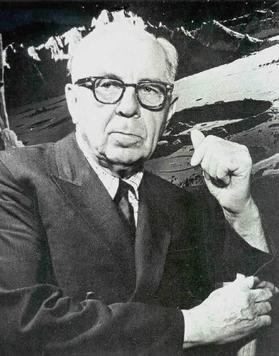
Chesley Knight Bonestell Jr. was an American painter, designer, and illustrator. His paintings inspired the American space program, and they have been influential in science fiction art and illustration. A pioneering creator of astronomical art, along with the French astronomer-artist Lucien Rudaux, Bonestell has been dubbed the "Father of Modern Space art".

James Edwin Gunn was an American science fiction writer, editor, scholar, and anthologist. His work as an editor of anthologies includes the six-volume Road to Science Fiction series. He won the Hugo Award for "Best Related Work" in 1983 and he won or was nominated for several other awards for his non-fiction works in the field of science fiction studies. The Science Fiction and Fantasy Writers of America made him its 24th Grand Master in 2007, and he was inducted by the Science Fiction and Fantasy Hall of Fame in 2015. His novel The Immortals was adapted into a 1970–71 TV series starring Christopher George.

Willy Otto Oskar Ley was a German and American science writer and proponent of cryptozoology. The crater Ley on the far side of the Moon is named in his honor.
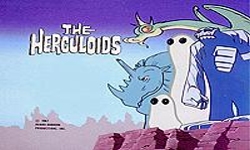
The Herculoids is an American Saturday-morning animated television series, created and designed by Alex Toth, that was produced by Hanna-Barbera Productions. The show debuted on September 9, 1967, on CBS. Hanna-Barbera produced one season for the original airing of the show, although the original 18 episodes were rerun during the 1968–69 television season, with The Herculoids ending its run on September 6, 1969. Eleven new episodes were produced in 1981 as part of the Space Stars show. The plotlines are rooted in science fiction and fantasy.
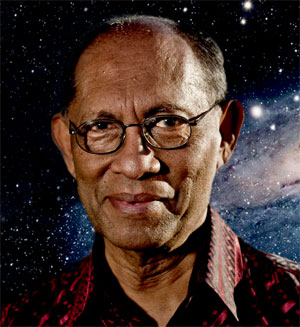
Nalin Chandra Wickramasinghe is a Sri Lankan-born British mathematician, astronomer and astrobiologist of Sinhalese ethnicity. His research interests include the interstellar medium, infrared astronomy, light scattering theory, applications of solid-state physics to astronomy, the early Solar System, comets, astrochemistry, the origin of life and astrobiology. A student and collaborator of Fred Hoyle, the pair worked jointly for over 40 years as influential proponents of panspermia. In 1974 they proposed the hypothesis that some dust in interstellar space was largely organic, later proven to be correct.
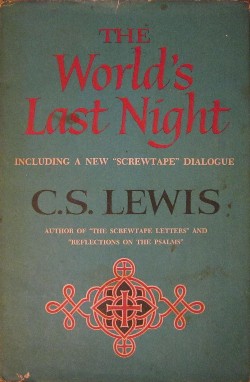
The World's Last Night and Other Essays is a collection of essays by C. S. Lewis published in the United States in 1960. The title essay is about the Second Coming of Jesus Christ. The volume also contains a follow-up to Lewis' 1942 novel The Screwtape Letters in the form of "Screwtape Proposes a Toast." The second, fourth and fifth pieces were published in the U.K. in a volume called Screwtape Proposes a Toast and other pieces (1965); the first, sixth and seventh were published in the U.K. in Fern-seed and Elephants and other essays on Christianity (1975). All the pieces were later collected in the comprehensive Essay Collection and Other Short Pieces (2000).

Rodney Matthews is a British illustrator and conceptual designer of fantasy and science-fiction.
Fifth planet may refer to:

Fifth Planet is a science fiction novel written by astrophysicist Sir Fred Hoyle and his son Geoffrey Hoyle.
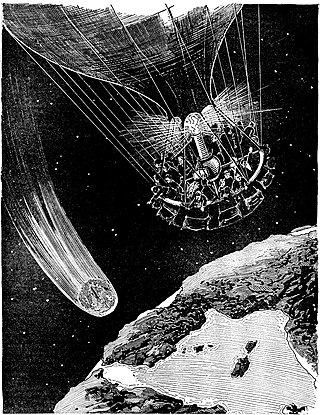
Comets have appeared in works of fiction since at least the 1830s. They primarily appear in science fiction as literal objects, but also make occasional symbolical appearances in other genres. In keeping with their traditional cultural associations as omens, they often threaten destruction to Earth. This commonly comes in the form of looming impact events, and occasionally through more novel means such as affecting Earth's atmosphere in different ways. In other stories, humans seek out and visit comets for purposes of research or resource extraction. Comets are inhabited by various forms of life ranging from microbes to vampires in different depictions, and are themselves living beings in some stories.
Shaiwatna Kupratakul is a Thai theoretical physicist. He is a scientist, educator, writer, translator, columnist, science communicator, producer and host of radio and television programmes. He focuses on science communication and the popularization of science through writing, radio and television media and public speaking. Kupratakul was nominated twice for the UNESCO Kalinga Prize in 1981 and 2004.
Robert Keith Ottum, known as Robert K. Ottum and Bob Ottum was an American sports journalist specializing in motorsport and writer of science fiction and thrillers. He was editor in chief of Sports Illustrated.
References
- Fifth Planet cover notes
- Fantastic Fiction entry
- Sci Fan bibliography